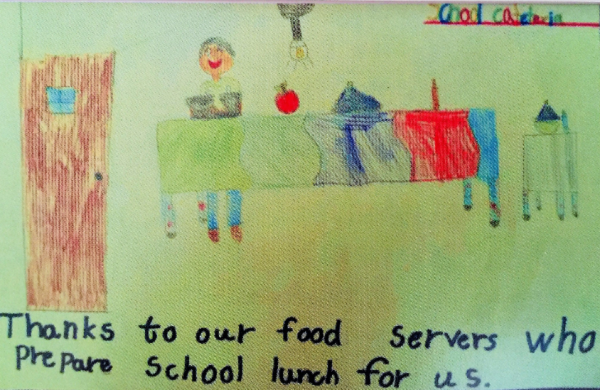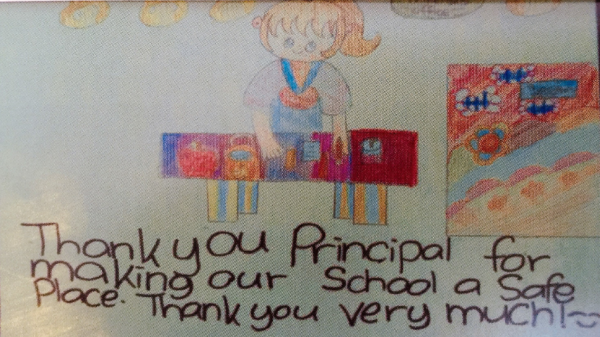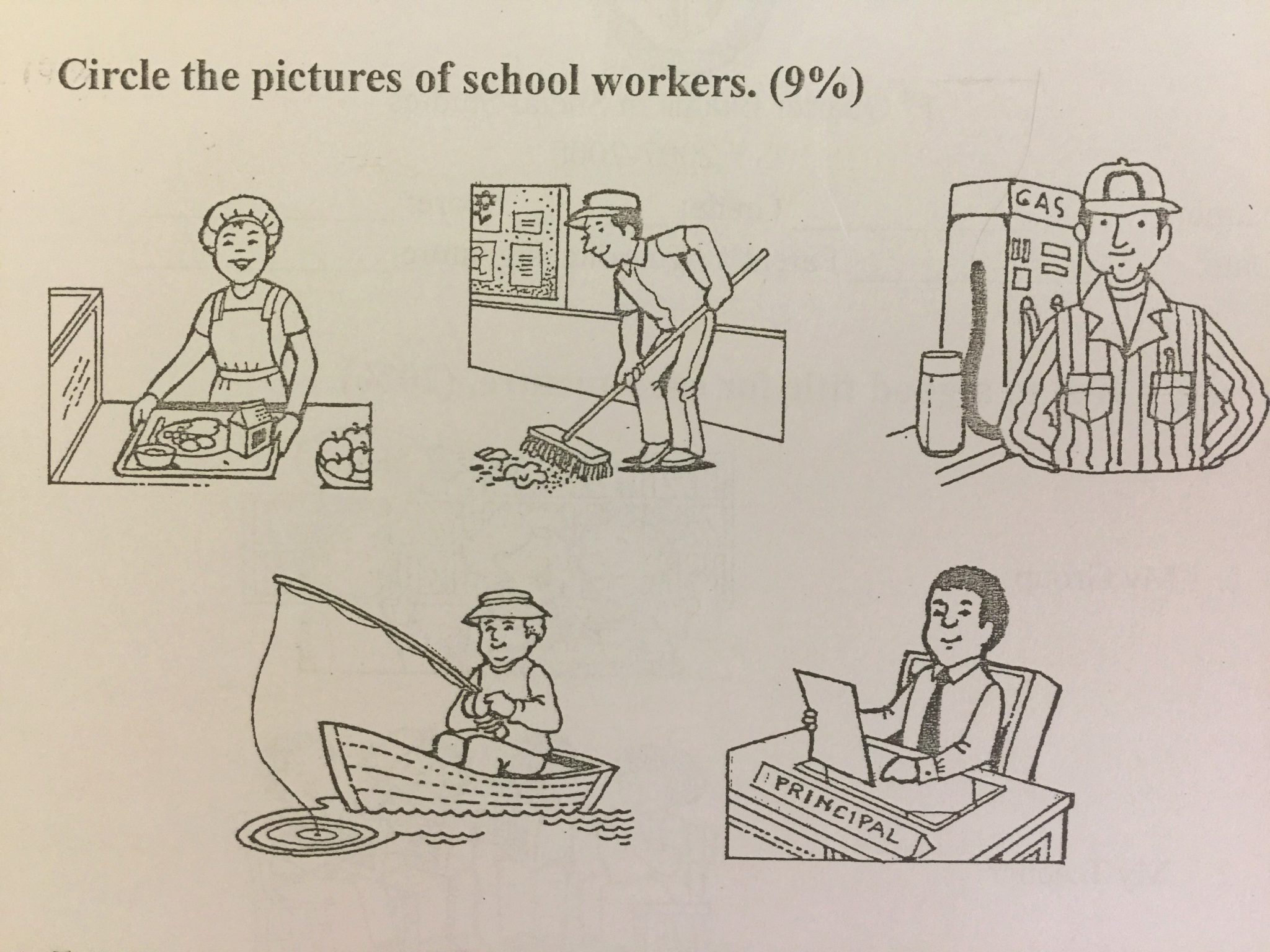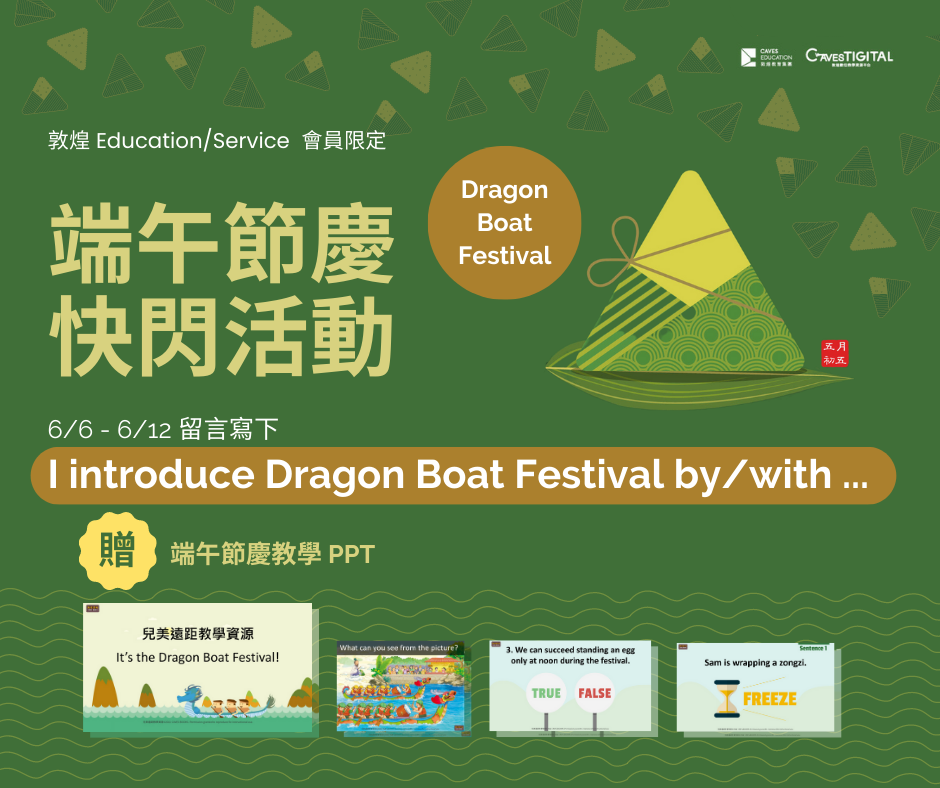社會是一門與人類生活息息相關的學問,探討著人類的演化、居住地理環境、天然資源、行為模式和文化素養等許多面向。身為小學老師,必須認同社會教育的及早扎根是為了培養學生具備關懷社會和公民責任的人文素養。因此,我們帶著學生認識社會、關懷人群、參與活動,有別於過往社會科填鴨式的教學、善用英語做為學習社會科知識的工具,就能幫助學生達成運用英語做跨領域學習的目標。
主題安排
以外僑學校小一的社會科教學為例,螺旋式的課程設計涵蓋了六大主題:
- School Days
- At Home With My Family
- Living in a Community
- In and Around the Land
- My Country, My Heroes
- My World Near and Far
這些主題緊密地圍繞著孩子的生活,從家庭和學校開始,逐步延伸到居住的社區以及進一步認識國家的地理環境和天然資源。接著,回溯時光的腳步,帶領學生認識國家發展的歷程和深具時代影響力的人物。最後,引導學生從上述幾個面向去認識有別於自己生活的土地和人文,鼓勵他們勇敢地探索,和世界接軌。
由於小一的課程淺顯易懂,為了增加學生認知結構的廣度,會完整的涵蓋這六大主題。中、高年級則隨著課程內容逐年加深,教師也可彈性地挑選部分主題進行深度教學。
課程設計
因應學生的英語能力不同,螺旋式課程由簡入繁的設計可以幫助教師針對 beginners, on-level, advanced 三種不同程度的學生設定差異化的學習目標和相關練習。以主題 School Workers 的教案設計為例,校園是學生每天投入最長時間學習的環境,而校務之所以能正常運作則仰賴於一群人辛勤地工作、在校園各處各司其職。因此 on-level 學生的學習目標即為認識校內的工作人員、他們的職稱以及工作內容。
一般教案 On-level
Objective:
(1) Identify school workers.
(2) Explore the kinds of work that school workers perform.
Presentation:
(1) Many different people with a wide variety of abilities, skills, and functions work individually and as a team to make a school successful.
(2) Explain that a school needs many different people to do many jobs. Everyone at school helps to make sure students learn happily and safely. For example: The librarian at our school helps students find books.
Vocabulary: job, worker, principal, teacher, librarian, food server, nurse, janitor
Guided Practice:
(1) Ask questions: e.g. Who is our principal? What does he/she do to help our school?
(2) Distribute the School Workers worksheet. Have students identify school workers and tell how they help others.

(3) Invite students to interview one school worker from the school and to draw that person on the back of the worksheet.
(4) Ask students to name that person and describe what he/she does to help the school.
Closure:
(1) Review the School Workers worksheet to ensure that students are able to identify school workers and their jobs.
(2) Ask students to sit in a circle with classmates who interviewed the same school worker and compare/contrast their drawings and responses.
Extension / Homework: Make a “Thank you” card for your favorite school worker.


教學過程中如發現學生學習動機低落、明顯跟不上,可將教學內容簡化、只專注在一個學習目標上。選擇更淺顯少量的單字,以及多利用圖片或穿插小遊戲幫助學生理解課程重點、減少因語言障礙所帶來的挫折感或甚至中斷學習。
初階教案 Beginners
Objective:
(1) Name the people who work in our school.
Presentation:
(1) Write the word “worker” on the board. Ask students to describe what a worker is.
(2) Define “job” as the work a person does. e.g. Mr. Brown is our school janitor. He cleans up every day.
Vocabulary: worker, job
Guided Practice:
(1) Help students solve a “work song” riddle. e.g. I am a school worker: I work in a classroom. I help children learn many things. Who am I?
(2) Help students identify school workers.

建議如有進度超前的學生,可給予挑戰性更高的學習目標。在引導練習的部分,增加個人文字閱讀和書寫量,並啟發學生對問題做比較和判斷性思考。
進階教案 Advanced
Additional Objective:
(1) Describe the work role of students in school.
(2) Identify community helpers.
Guided Practice:
(1) Write three facts you know about each school worker.
What do they do? | |
principal |
|
teacher |
|
librarian |
|
janitor |
|
nurse |
|
(2) Group discussion: What do students do to help others at school?
(3) Compare/contrast your chosen school worker to another community helper, such as a baker or firefighter.
課堂教學
依自身跨領域教學多年的經驗,學生無法在課堂上參與討論的原因主要是語言障礙和對課程內容的不熟悉。面對尚未具備預習能力的小學生,教師在課前的準備顯得格外重要。除了對課程內容精熟、能針對不同英語程度的學生設計教案、還要引導學生將課程內容與具體的生活經驗做連結,幫助學生養成思惟和判斷的能力,提高主動參與學習的意願。
以主題 Schools Long Ago 為例,在尚未進入主題前可進行提問式的引導,如:Can you imagine what was school like a hundred years ago?
聽聽學生的想法後,請他們翻開課本仔細觀察相關的圖片,接著提問:
- What are some things you can look at to find out about schools long ago?
- How are that classroom and our classroom alike? How are they different?
- Why do you think a classroom would have stoves?
- How did children go to school long ago? How do children go to school today?
將各方發言歸納總結後,可藉機將母語文化和其他多元文化導入這個主題,讓學生認識到在不同的國家、不同的年代,學校有著不一樣的風貌和功能。期望學生不僅能懂得包容和尊重多元文化的差異,進一步能透過小組的學習培養互助合作的精神。秘訣分享,圖片、地圖或地球儀是社會科教學不可或缺的重要工具。對小學生而言,這些工具更勝書上的千言萬語,彷彿是一台時光機、一道任意門,能瞬間飛越國界、穿越時空,一窺不可重現的過去。
課後活動
關於課後活動和作業的規劃,除了習作,我更傾向引導學生大量的觀察、思考和實作。例如:以主題 Schools Long Ago 做延伸,課後作業可以請學生以圖畫呈現出對未來世界學校的想像,請他們上台分享。學生還可以做分組討論,思考為什麼要上學? 除了上學,還有哪些不同的學習模式? 透過同儕間的互動合作和腦力激盪達到主動建構知識的目的。
參考書目:
Claudia Hoone (2000) Harcourt Brace – Social Studies – A Child’s Place – Teacher’s Edition G.1
更多 Mina 老師好文分享:
作者簡介|Mina
- 資深外僑學校教師



 © All rights reserved, powered by
© All rights reserved, powered by 

